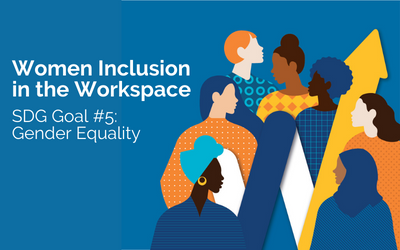Women participation in the labor force in numbers
The fight for women empowerment and inclusion in the workspace has been an ongoing fight in our world. Although female participation in the labor force has seen an ongoing increase from 1980 till 2021, however, as per the World Bank Gender Data Portal: “The global labor force participation rate for women is just over 50% compared to 80% for men. Women are less likely to work in formal employment and have fewer opportunities for business expansion or career progression.”
Education as a direct road to employment
There are different opportunities to invest in to further increase this female participation in the labor force on the long run and make sure that women are getting the opportunities they deserve. One important opportunity which has a direct impact on women employment is education as shown in the results from year 2000 onwards. The more women are educated, the higher their chance of inclusion and employment. This is verified through different studies done across countries by IZA Institute of Labor Economics and on Science Direct, which show that “educated women were said to increase their problem solving, life skills, flexibility and openmindness” which in turn had an effect on their increased participation in the workplace. Therefore, to increase labor force participation for women, the focus should also be directed to the countries with the lowest rates which are mostly, as shown in the results in the map, countries in Africa, the Middle East, and South Asia.
The road to achieve Gender Equality and increase women inclusion in the workplace
Investing in scholarships and school programs/workshops targeted to women, is a long term solution to increase the global labor force participation rate for women. These scholarships and development programs/workshops should also be targeted towards topics of high impact and high demand in the job market. Later stages can also include legal reforms to achieve gender equality and decrease gender discrimination in the workplace. Therefore, we call all advocates, politicians in donor countries, and international organizations to have action plans in process in countries that need it the most to make sure that we reach SDG #5 by 2030.

0 Comments